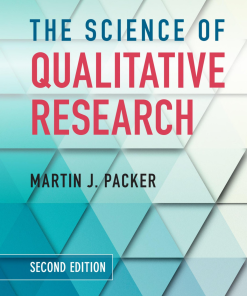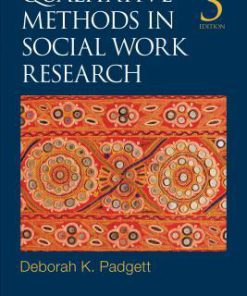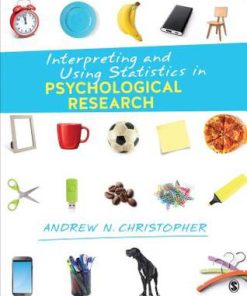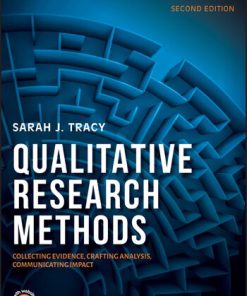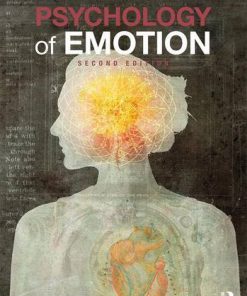A Handbook of Visual Methods in Psychology 2nd edition Using and Interpreting Images in Qualitative Research 2nd Edition Paula Reavey 1351032046 9781351032049
$50.00 Original price was: $50.00.$25.00Current price is: $25.00.
This completed downloadable of A Handbook of Visual Methods in Psychology 2nd edition Using and Interpreting Images in Qualitative Research 2nd Edition Paula Reavey

Instant downloaded A Handbook of Visual Methods in Psychology 2nd edition Using and Interpreting Images in Qualitative Research 2nd Edition Paula Reavey pdf docx epub after payment.
Product details:
- ISBN 10: 1351032046
- ISBN 13: 9781351032049
- Author: Paula Reavey
This comprehensive volume explores the set of theoretical, methodological, ethical and analytical issues that shape the ways in which visual qualitative research is conducted in psychology. Using visual data such as film making, social media analyses, photography and model making, the book uniquely uses visual qualitative methods to broaden our understanding of experience and subjectivity. In recent years, visual research has seen a growing emphasis on the importance of culture in experience-based qualitative methods.
Table of contents:
1. The return to experience: psychology and the visual
PART I: Static media: the use of photography in qualitative research
2. Image and imagination
3. Bend it like Beckham? The challenges of reading gender and visual culture
4. Using photographs to explore the embodiment of pleasure in everyday life
5. Narrating biographical disruption and repair: exploring the place of absent images in women’s experiences of cancer and chemotherapy
6. Using photographs of places, spaces and objects to explore South Asian women’s experience of close relationships and marriage
7. Reflections on a photo-production study: practical, analytic and epistemic issues
PART II: Dynamic features: social media, film and video in qualitative research
8. Mental health apps, self-tracking and the visual
9. The visual in psychological research and child witness practice
10. The video-camera as a cultural object: the presence of (an)other
11. Girls on film: video diaries as ‘autoethnographies’
12. Visual identities: choreographies of gaze, body movement and speech and ‘ways of knowing’ in mother–midwife interaction
13. Methodological considerations for visual research on Instagram
14. The big picture: using visual methods to explore online photo sharing and gender in digital space
PART III: Shared visions: opening up researcher–participant dialogues in the community and beyond
15. Visualising mental health with an LGBT community group: method, process, (affect) theory
16. Imagery and association in a group-based method: the visual matrix
17. Working with group-level data in phenomenological research: a modified visual matrix method
18. Risk communication and participatory research: ‘fuzzy-felt’, visual games and group discussion of complex issues
19. Picturing the field: social action research, psychoanalytic theory, and documentary filmmaking
20. Moving from social networks to visual metaphors with the Relational Mapping Interview: an example in early psychosis
21. Building visual worlds: maps as a tool for exploring located experience
22. Towards a visual social psychology of identity and representation: photographing the self, weaving the family in a multicultural British community
23. ‘I didn’t know that I could feel this relaxed in my body’: using visual methods to research bisexual people’s embodied experiences of subjectivity and space
24. Travelling along ‘rivers of experience’: personal construct psychology and visual metaphors in research
25. Psychogeography and the study of social environments: extending visual methodological research in psychology
26. Tribal gatherings: using art to disseminate research on club culture
27. Sometimes all the lights go out in my head: creating Blackout, the multi-sensory immersive experience of bipolar II
PART IV: Ethical, analytical and methodological reflections on visual research
28. The photo-elicitation interview as a multimodal site for reflexivity
29. Image-based methodology in social psychology in Brazil: perspectives and possibilities
30. Impressionist reflections on visual research in community research and action
31. Polytextual thematic analysis for visual data: analysing visual images
32. ‘So you think we’ve moved, changed, the representation got more what?’: methodological and analytical reflections on visual (photo-elicitation) methods used in the men-as-fathers study
33. On utilising a visual methodology: shared reflections and tensions
People also search:
what is a visual code in psychology
what is manual of experimental psychology about
when visual
who published manual of experimental psychology
You may also like…
Politics & Philosophy - Social Sciences
Qualitative Methods in Social Work Research Deborah 1483389944 9781483389943
Education Studies & Teaching - School Education & Teaching
Biology and other natural sciences - Biostatistics
Interpreting and Using Statistics in Psychological Research Andrew (Drew) N Christopher
History & Research
Clinical psychology a modern health profession 2nd Ed 2nd Edition Wolfgang Linden
Politics & Philosophy
History & Research




